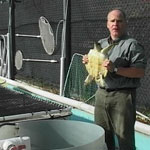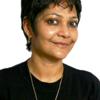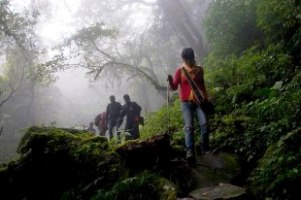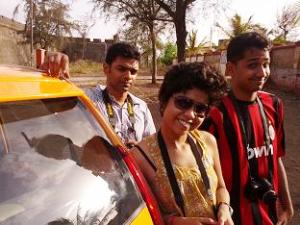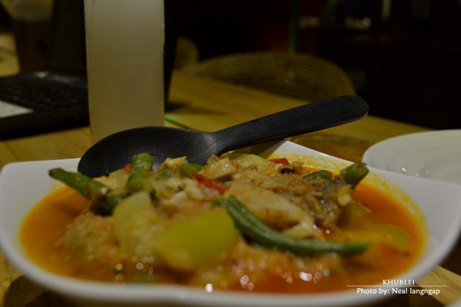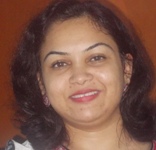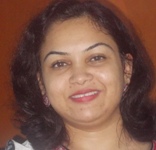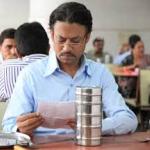The fourth in the series of Thumb Print Conversations on” Media and Northeast” opened in Tezpur on June 14, 2013. This edition was held in the historic Tezpur Mahila Samiti premises. One has begun to look forward to the locales as much as to the conversations with persons from various walks of life. If the last locale was elegant urban, this was charm rustic. One walked off the busy street into the venue, onto the grassy green forecourt bordered with rooms in which hands on looms worked in unison.
Chairs seemed almost superfluous as people gathered for the conversation chatted informally, twirled hand held Palmyra leaf fans to cool the sultry air, with tantalizing glimpses of the golden laburnum in flower above the roof. Behind us rose tall trees against a partly cloudy twilight sky their leaves demurely swaying and the rhythm of the looms scored the background music throughout the Tezpur Conversation. The women working these looms were part of the Tezpur Mahila Samiti an NGO founded in 1919 and renamed Tezpur District Mahila Samiti in 1940. Today its members number over 12,000 across 200 branches in Sonitpur District of Assam. Many luminaries had visited this historic ngo including Mahatma Gandhi, Mira Ben and Indira Gandhi.
The Tezpur edition of the Thumb Print Conversation brought together more academicians and less media luminaries than the Guahati edition. Teresa Rehman, our host and Managing Editor Thumb Print Magazine seemed to be the sole flag bearer of the Media we were to discuss. The northeast was fairly represented by the chairperson of Tezpur District Mahila Samiti, academicians and students with a sprinkling of conservationists, entrepreneurs, dancers and designers. Our moderator this evening was Dhananjay Katju, wildlife biologist from Texas A & M University, working part of his programme in the National Parks of NE India.
Meenakshi Goswami, a teacher and writer, opened the proceedings and in the course of the conversation clearly highlight lighted the bias towards urban centric reporting in the local and national press. The moderator chipped in with his well informed perceptions of the region gleaned from national and international media. Sensationalism was universal whether in the US of A, in breathless breaking news or in the region itself. Teresa recounted the difficulties of balancing headlines, stories, deadlines and jobs, especially for young reporters.
Another important point that was raised was that the ‘national media’ is very metropolitan. Academic Hemjyoti Medhi felt that a rape in a remote village in Haryana does not get the same coverage as a rape in the capital Delhi. Similarly, the regional media too is Guwahati-centric where all commercial interests lie.
An academician felt reporting was dominated by negativity. Another felt that there were issues more urgent beyond wildlife and related issues that did not get enough coverage. Prasanta Mahanta, a student of Darrang College came up with the quirky observation that this region is commonly known as the northeast and very rarely called Northeast India thus implying an unsaid disconnect. It was refreshing to hear views about the vigour and strength of the Assamese media.
Social activist Meenakshi Bhuyan suggested good stories in the local languages should be translated and given larger circulation. The use and misuse of the isolation and marginalisation of the North east were actively discussed. The impact, validity and accessibility of the digital media brought up strong and distinct opinions. In depth analysis, documentation and self empowerment were advocated as some of the ways of generating truly representative perspectives.
All these potentially divisive, partisan and sometimes individualistic points of view were amicably moderated and discussed over cups of ronga cha (black tea without milk), bor pitha (a traditional Assamese sweet) and salted biscuits. While above us between the clouds and coconut fronds the stars twinkled and the moon smiled, perhaps more than a little amused at the serious conversation on terra firma? Issues of sensationalism, insensitivity, typecasting of the region as a whole, a disconnect with reality were common to conversations in Guwahati the state capital and to Tezpur, the cultural capital of the state. Moromi Goswami, who teaches in Darrang College felt that media is all-powerful and all-pervasive. “Sometimes, the images shown on television is very disturbing.”
When the electricity went off for a while the conversation continued lit by moon glow and emergency lamp (the latter thoughtfully brought by our lady host). Conversations highlighting the vigour of the local media and language, misuse of isolation, requirement for indepth analysis and documentation, big game versus the small game in conservation, urban centric reporting were particular to Tezpur. There was little hinterland syndrome, instead there was a sense of dignified empowerment. If this could become representative of the region, the northeast syndrome would be much alleviated. And the new era ushered in by social media and its potential was highlighted by Syed M Raza of the Social Media Club, Assam. Soumen Dey of the WWF-India said that its time we realized the potential of the internet. We must document our culture and bring energy to the region.
In retrospect: we are a species that must communicate whether we use vocal chords, instruments, paper or digital media, and therefore can we give up our right to be the makers of stories and the dreamers of dreams?

.jpg)








